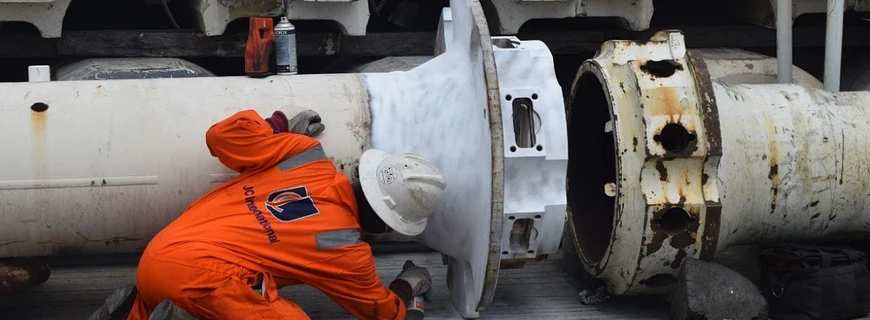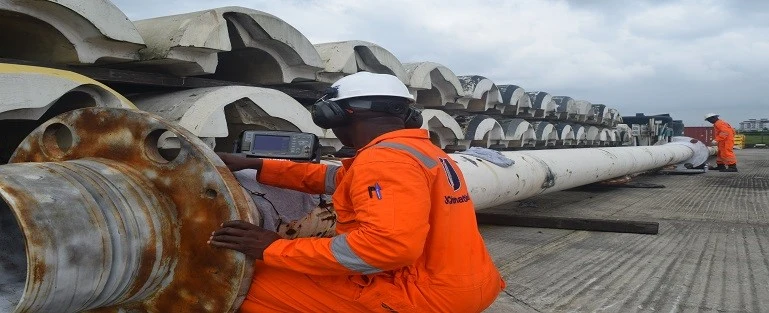RISER INSPECTION

RISER INSPECTION
The riser forms a connection between the topside of an offshore platform and a pipeline that is located on the seabed. The pipeline system is equipped with the facilities to launch and clean the entire pigging of the pipeline. The riser is sometimes made of different material and constitute wall thickness. In recent times, offshore operators are committed to ensuring that the environment is duly protected. The pigging and the riser inspection are essential to determine the condition of the installation.
Ultrasonic inspection of the riser is often used based on the application of a compact umbilical operated tool. This creates an avenue for an immediate evaluation. It is always impractical to inspect the riser from outside especially when the riser is not accessible from outside. The umbilical operated tool is essential in ensuring that corrosion is detected using the Time-of-Flight Diffraction (ToFD) technique. The vertical sections of a riser can be inspected using the compact umbilical operated ultrasonic tool. The tool is lowered into the open riser by gravity using a winch assembly. A separate umbilical connects the ultrasonic electronics inside the tool with the ultrasonic unit and data presentation on the platform. The set of equipment that is used for this purpose includes a riser inspection tool, electric winch unit, odometer assembly, multichannel ultrasonic unit, and data storage and display computer.
A common technique that is used for the riser inspection is the ultrasonic stand-off method. This method is suitable for quantifying and differentiating between internal and external corrosion. It is also capable of measuring eth wall thickness. A circular array of transducers is located at some distance away from the inner pipe wall and the liquid in the pipe which is usually crude oil or seawater acts as an essential acoustic medium. In this method, both the internal corrosion as well as the pipe wall thickness can be measured simultaneously to achieve a coherent result.
This inspection is used to inspect both the gas and crude riser as long as the riser is filled with a suitable liquid during the inspection. One principle that must be taken note of during the riser inspection is the fact that the riser can only be inspected when the riser is filled with crude. This is essential in that it requires depressurization and opening of the riser. However, for safety reasons, the riser may be filled with seawater. If this is the case, the crude is displaced using the same method that is used for the inspection of gas risers.

Inspection coverage for corrosion detection ensures that the size of the corrosion pits is detected, and the number of transducers will be employed. The current riser inspection tool makes use of 32 transducers which can be comfortably distributed around the circumference. The increase of coverage is ascertained by inspecting during both the downward and upward movement while some axial rotation occurs which leads to practically full coverage. The inspection speed can be very high and can be performed in a day. With riser inspection, it is possible and easy to detect and quantify both internal and external corrosion. The principle of the ToFD technique is to map out the edges of a defect by making use of a diffracted signal.
This is done in marked contrast with the conventional ultrasonic weld inspection which relies on the amplitude of specular reflections that are received from the defects. To determine the position of the defect edges, a wide-angle transmitter probe is placed on either side of the weld. The depth of the defect edge can also be calculated from the time of the flight of the corresponding ultrasonic wave.
JC International is the nation’s leading inspection, verification, testing, and certification company. Contact us for your specific inspection requirements for your oil country tubular goods (OCTG).

Leave a Reply